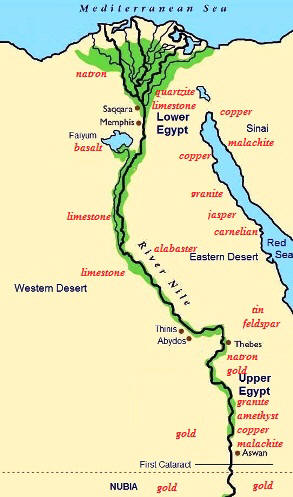Pre-dynasty cultures were organized into two groups – Upper and Lower Egypt. Union into one state happened in the 31st century BC; at the age of Naqada III. Some scientists put very well known kings of that period such as King Irihor, Scorpion, or Ka in to a Zero Dynasty. Witnesses of the union were pallets whose new forms arise exactly in this period, and on those Pallets dominated figures of animals similar to those of Mesopotamia. The most famous are Pallet of scavengers and Narmer Palette. In this period appeared first slaves (prisoners of war) and landowners that expand its properties at the expense of small owners who are in the “peasant position”.
Narmer Palette
The James Quibell in Kom al Ahmar (Hierakonpolis) discovered Narmer Palette. The Palette is considered the most valuable historical source for the establishment of the first dynasty, and that is a direct evidence of the establishment of the joint state. Narmer is, according to Manetho (Egyptian priest from 3 century BC), a mythical unifier of Egypt.
Manetho called it ‘’Men’’ which means “strong” while on the table made of ivory a “warrior” is called Aha. Pharaohs often received “nicknames” according to what characterizes them. Because they were considered Gods, their real name was rarely used. The most commonly were referred to as “Big house” which in Egyptian sounds like this per-aâ – Greeks used this form to create name Pharaoh.
Proof of that is found on the Palette where on the recto side is shown Upper Egypt with a white crown and on the verso side is shown Lower Egypt with the red crown. It is believed that the palette celebrates the victory over the rulers of the north and the union because on the front side Horus (God of Upper Egypt) holds in the claws a sign of Lower Egypt, and on the other side are shown the animals with intertwined necks, which represents the union (samtaui). Narmer is also mentioned at the head of the mace from Hierankopolis, also on the stamp in Umm el Kaba and in Herodotus. Herodotus mentioned him as Mena and he says that he founded Memphis.



FIRST (Thinis) DYNASTY (3.000. – 2.890.)
The period of the First Dynasty is also called an archaic period. Tombs (mastaba) of the first dynasty ruler were located at Saqqara and Abydos. It is interesting that on two places were seen tombs of rulers with the same names. Therefore, it was assumed that those in Abydos were probably cenotaphs. This was concluded based on size, because those in Saqqara are much bigger. Cenotaphs are made so that the rulers would have its place in the holy city for which it was believed that it was Osiris tomb. Generally, in these tombs there were very little findings. In Djer’s tomb at Abydos was found female hand with four precious gold bracelets and nothing else.
Important pharaos:
Men – mythical unifier Narmer. It is believed that he founded Memphis that is located behind large dike at Fayum.
Djer
Djet – expedition to the Red sea.
Den – confrontation with Bedouins of the tribe Juntiu.
Usaphais – his tomb was the first with the granite floor and stone staircase.
Queen Merneith, Adjib (Anedjib), Semerket, Kaa
SECOND (Thinis) DYNASTY (2.890. – 2.686.)
There is very little information about rulers and events that happened during Second Dynasty. Probably the country was divided again, and possibilities of military conflict between the two sides are not excluded. The rulers of this dynasty were buried at Abydos.
Peribsen – on its serekh – (gravestone) placed Seth (divine of the South)
Khasehem – on its statue tells a story about the victory over the North and union (burial chamber made out of stone)
Khasekhem – a successor Khasehem already showed Seth and Horus together, which meant that Egypt was reunited.
